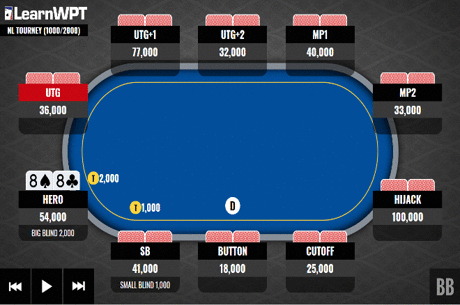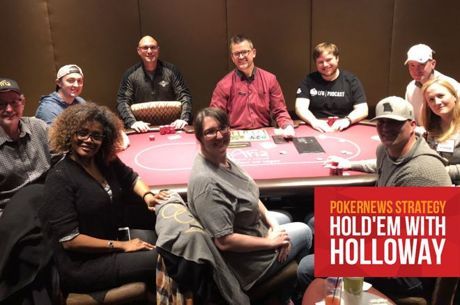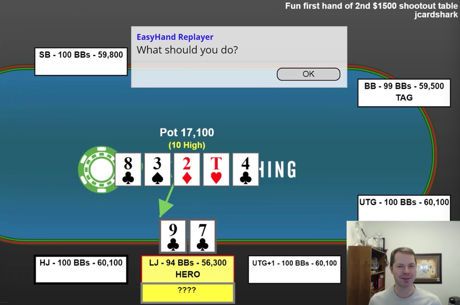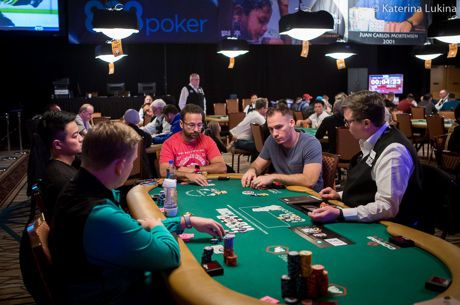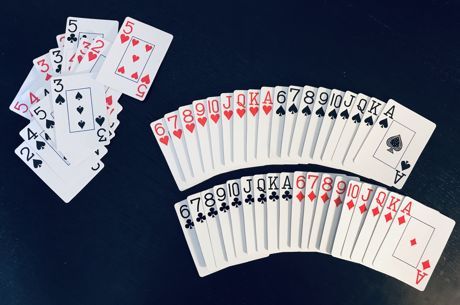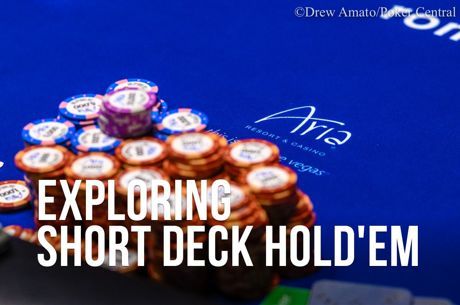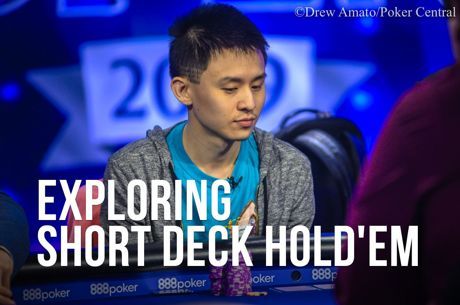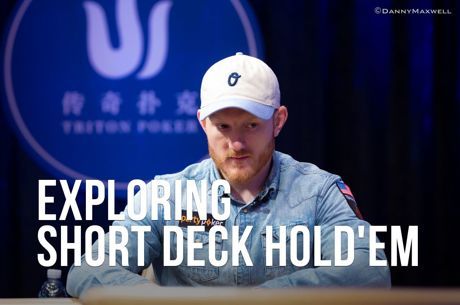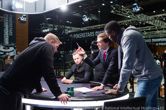Exploring Short Deck Hold'em, Part 6: Hand Review - Bonomo Bluffs
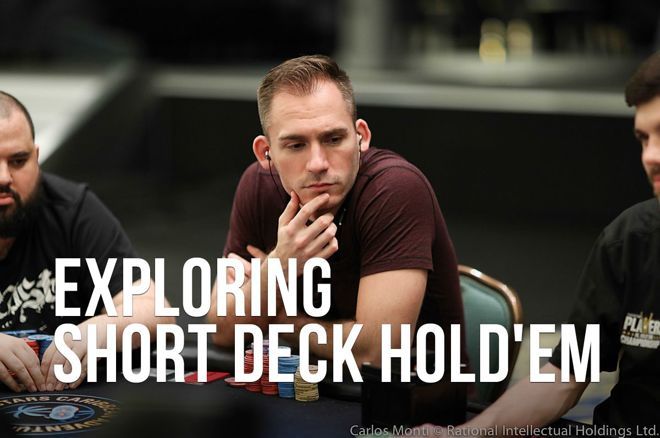
Table Of Contents
Over the course of five entries in this series, we've gone over a number of relevant concepts applied to short deck hold'em. We've covered the basic rules, the odds, and delved into strategies applicable to preflop and postflop play.
With the groundwork for an understanding of short deck laid out, it's time to look over some hands wherein players are putting these concepts into practice.
To start off with, we'll look over a hand from the recent Triton Super High Roller Series Jeju HK$1,000,000 (~$128,000) Short Deck Ante Only.
At this point in the tournament, 16 players remained from a field of 81, so it was getting close to the money. Antes were 12,000 with a 24,000 ante on the button. Justin Bonomo started with about 950,000 on the button, with Gabe Patgorski covering and playing 1.5 million in the cutoff. Bonomo had recently been caught bluffing for double the size of the pot.
The Action
"Jungleman" Dan Cates opened action by calling in the hijack with 10♦9♣, Patgorski called in the cutoff with A♠10♠ and Bonomo checked his option on the double ante with J♦8♣.
The flop came K♦A♥Q♦ and Cates checked. Patgorski bet 50,000 and Bonomo called, with Cates folding to leave them heads up.
The turn brought the A♦ and Patgorski slowed down with a check. Bonomo bet 100,000 and Patgorski called. On the J♣ river, Patgorski checked again and Bonomo stuck in all but the last few crumbs of his 789,000. Patgorski took some thinking time, but eventually conceded the pot.
Concept and Analysis
First off, we see in action a concept from Part 3 of this series. Isaac Haxton pointed out that players who aren't on the button are getting a great price to put in one more ante to try to see the flop and Cates does just this by limping in with a mediocre 10♦9♣.
Patgorski just calls as well despite holding a decent suited ace. Remember, suited cards help you far less in short deck compared to regular no-limit, but this is still a hand many players will raise in this spot.
Bonomo opts to check and it goes three ways to a highly coordinated K♦A♥Q♦ flop. Everyone has a little something here as Patgorski had top pair and a straight draw while the others each have a blocker to the current nuts. Patgorski bets about half of the pot, and given that he likely has the best hand here — Bonomo checked and could have any two, while Cates limped from late position — that seems sound enough.
Bonomo perhaps senses an opportunity. First off, if a ten comes out, he'll have a straight. While gutshots are an object of some derision when it comes to hold'em, we know from Part 2 of this series that in short deck they come in about a quarter of the time, which isn't insignificant.
Furthermore, he already has a blocker to the nuts and if a diamond hits, he has both a flush draw and another blocker to a strong hand. Plus, they're deep-stacked with a stack-to-pot ratio of more than four still. He has room to maneuver and opts to float.
On the turn, Bonomo not only still has a blocker to a straight, but he picks up the nut diamond blocker as the A♦ falls. Now, Patgorski checks and Bonomo has a pretty good bluffing opportunity. The fact that Patgorski bet the flop and the top card paired is a bit concerning, but it's not a given that he has trips. Furthermore, because this is short deck, even if he's already full — which isn't that likely because he'd have had to have limped a big hand — Bonomo is still drawing live in the worst-case scenario.
When Patgorski calls his bet, it seems most likely he has trip aces, with a straight also a possibility. He certainly could also have a low flush himself though, having limped in for the minimum in late position.
On the river, Bonomo picks up some showdown value that's almost certainly worthless. He probably needs to bluff to win the hand and he has the nut flush blocker, but what sizing should he choose? If he thinks Patgorski has at least trip aces, a small bet may not do it. Shoving for over the size of the pot likely gives him the best chance to induce a fold, and he does so.
Now, it's on Patgorski and the situation is tough. He has a straight and he has an ace in his hand to block some full houses that beat him, but Bonomo is most likely shoving this big for value with flushes.
Bonomo just checked preflop, so he could certainly have any two suited cards. What makes it especially hard for him to be bluffing, though, is his flop action. Heads up, it might be a little more plausible to think Bonomo might show up with some bluffs, but he called on the flop with a third player behind him.
Some of the plausible bluffs, as the commentators pointed out, would be hands that make a straight where Bonomo is turning his hand into a bluff. Especially plausible would be something with one diamond in it. Patgorski has to consider that a possibility, and in those cases he'd only be calling to chop.
Finally, there's a meta factor with Bonomo having recently been caught bluffing for over the pot. Does that make it more or less likely he's bluffing?
Who knows, but as Bobby Baldwin once said, the second bluff against a good player is the good one. And Bonomo got the second one through here.
In this Series
- 1 Short Deck Poker Rules: How to Play Short Deck Poker
- 2 Exploring Short Deck Hold'em, Part 2: Odds and Probabilities
- 3 Exploring Short Deck Hold'em, Part 3: Preflop Play
- 4 Exploring Short Deck Hold'em, Part 4: Postflop Play
- 5 Exploring Short Deck Hold'em, Part 5: Postflop Play Continued
- 6 Exploring Short Deck Hold'em, Part 6: Hand Review - Bonomo Bluffs
- 7 Exploring Short Deck Hold'em, Part 7: Hand Review - Ivey Shoves Big
- 8 Exploring Short Deck Hold'em, Part 8: Hand Review - Koon Uses Blockers
- 9 Exploring Short Deck Hold'em, Part 9: Hand Review - Yu Finds a Fold
- 10 Exploring Short Deck Hold'em, Part 10: Tournaments and the Future

